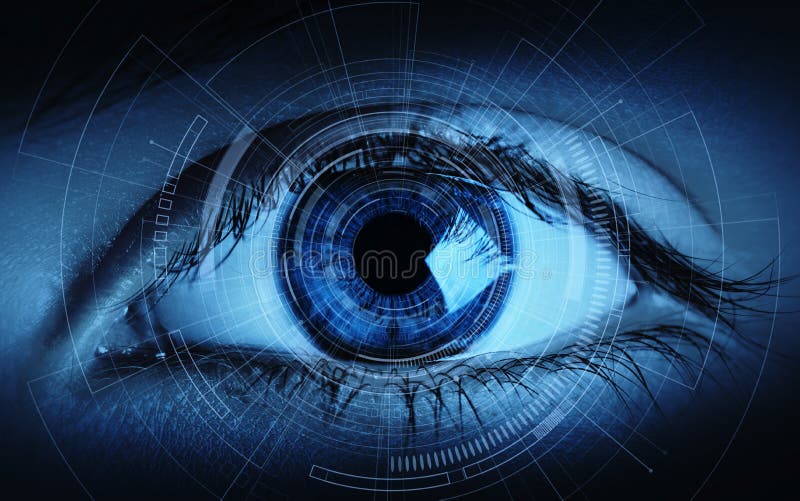In Our Eyes

Like me, I’m sure you’re rejoicing that the coronavirus mask requirement is being eased. During our long season of wearing masks for our protection, I became acutely aware of people’s eyes. When I encountered someone in the street, in the shopping center, or in a parking lot, I watched the eyes for contact, since I couldn’t see the lips to acknowledge a possible smile. This was most of the time, but sometimes I was a bit guarded and walked on, not really “seeing” the person.
Eye contact is important in communication. With a look or even an averted glance, we tell others what we’re thinking. Remember the first rule in your speech class in high school or college? Make eye contact with your audience. Even in situations where you’re not making a speech— perhaps just reading an announcement in public, or the Scripture Lesson in church—you are expected to look up and make eye contact with your audience. A recent AARP Bulletin item about improving relationships suggests that a couple should make eye contact over dinner by holding “each other’s gaze for 60 seconds.” The benefit? “It will help you find the grace, beauty, or soul in each other’s eyes.” Sounds romantic, doesn’t it? Try it sometime.
Society has some eye-rules that parents or teachers try to drill into youngsters. “Don’t stare.” “Look the person in the eyes when you speak.” In some places, a look has a consequential meaning. Recently I read about a woman and her husband who were traveling in a South American country and stopped at a restaurant late in the day. Sprawled on the restaurant floor were some singing cowboys with guns and guitars. At the bar was one cowboy who stared boldly at the wife, making her feel uncomfortable. She quietly mentioned this to her husband. “Just don’t look back,” he told her, “because he’ll think you like him. Then he’ll shoot me and take you away.” The eyes communicated a potent message.
Eye color has metaphorical significance. In one part of the world, having a “red eye” connotes envy or covetousness; green eyes are universally associated with jealousy; a black eye suggests bringing shame or embarrassment on one’s self or family. Fiction writers use eyes in dramatic ways, so we may read about a character whose eyes “speak daggers.” In Toni Morrison’s The Bluest Eye, the color blue has deep emotional and psychological meaning. In the harsh, raw narrative, set in Lorain, Ohio, Pecola is a young girl who loathes herself because she believes she is ugly, and she receives extensive confirmation about it from the people around her. Even the grocer looks right through her when she goes to buy candy. Pecola’s self-esteem is zero. She equates blue eyes with whiteness and beauty while all along, hating herself as ugly and yearning for acceptance. She believes having blue eyes will make her more acceptable to the people around her, and, therefore, to herself.
Pecola’s story shines a light on the tendency of some individuals to see themselves through the eyes of others who look at them as though they don’t exist. It is a painfully destructive experience to be so treated. Sometimes it is the look of scorn or disdain that communicates the message. In her poem “Still I Rise,” Maya Angelou says, “You may cut me with your eyes,” and people do that quite often, leaving the victim to try to rise above the unkindness. It can also be a belittling look designed to make the person feel less valuable. Parents with autistic children understand “the look” and are pained when they encounter it, unable to do anything about it except to reinforce their youngster’s self-image as well as their own.
I heard the president of the University of Maryland Baltimore County (UMBC) speak at a conference once and have never forgotten the incident he related about an applicant he’d interviewed for admission into the university’s program for high achievers–most with SATs of 1300 and better. A young woman came to the interview tackily dressed, not well groomed, really looking out of place; the president said he pitied her and just knew she wouldn’t be a match for the program. But when he interviewed her and looked beyond the unattractive exterior, he saw brilliance and didn’t hesitate to accept her.
Oftentimes we look only at externals. The prophet Samuel had to adjust his sight when he went down to Bethlehem to choose one of the sons of Jesse as a potential replacement for King Saul. Eliab, the oldest, was the first of the young men the prophet saw. Eliab made a great impression: good-looking, terrific physique. The prophet thought he had his man and was ready to anoint him, but God told him that was not the one and reinforced His verdict with the memorable pronouncement that “man looks at the outward appearance, but the Lord looks at the heart” (1 Samuel 16:17). Little David received the Lord’s approval. When we look beyond only what the eyes see, we exercise a godlike quality and see as God does. With singer Michael W. Smith, our prayer should be “Open the eyes of my hear, Lord/ we want to see you,” for when we see God, we experience the striking corollary of seeing His children with caring, compassionate, and loving eyes.
Even after we will have left wearing masks totally in our past, we must go forward, looking beyond mere externals to see the good that is inside everyone.
Blessings,
Judith
“The eye is the jewel of the body.”
Henry David Thoreau
2 Comments
Ouida Westney
Thank you very much for this timely, well-designed, informative and inspiring article.
Judith Nembhard
And thank you, Ouida, for your generous comment on this month’s post. It is a topic that I thought about deeply and hoped it would be of value to my readers. I am glad you appreciated it. Many thanks. JN